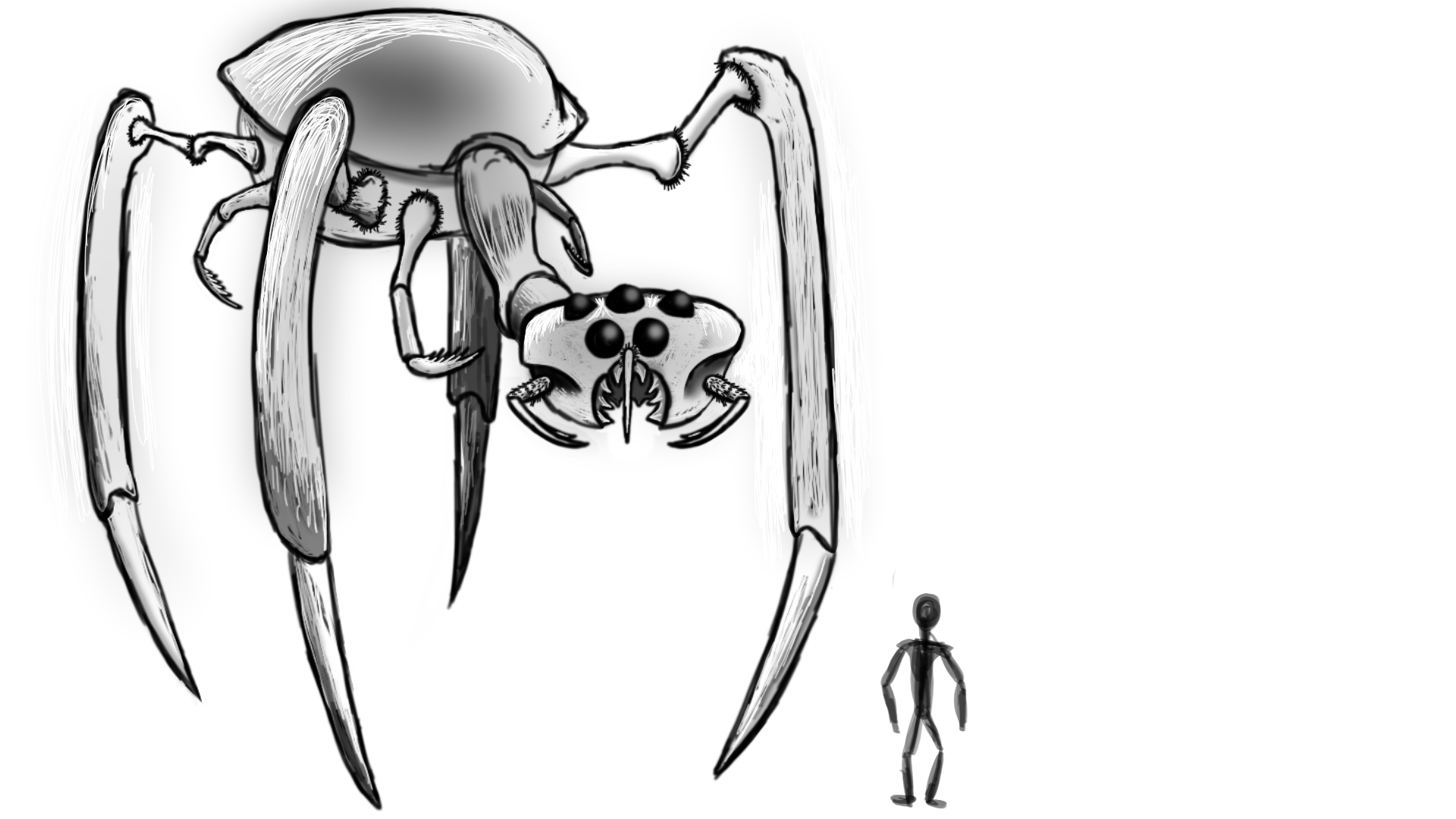Queen Hunter
The indisputably ultimate predator of the Tuku Jungle. The Tslakla named it The Queen Hunter. The Tukumen called it the Aah’mus R’cibs /Ah-ah-moose rih-keebs/, which roughly translated to The Hungering Shadow in Trader's Tongue.

Anatomy #
The Queen Hunter was a towering arachnid, standing at 9.5 meters above the ground. Its exoskeleton was a glossy pitch black, with some minor dark green splotches on the abdomen. Its head was a wide, elongated oval, complete with 5 burnt-red eyes capable of using infrared vision to hunt prey. It had 3 mandibles. Two mandibles were opposite to each other, pointing inwards from the sides of the Queen Hunter’s mouth. The third's position was on the upper “lip” of the creature’s maw. All 3 mandibles could inject a chemical into prey, each with a different purpose.
- The vertical mandible injected a paralyzing neurotoxin.
- The horizontal mandibles injected a digestive, caustic enzyme to begin digesting the prey’s bones, allowing for easier swallowing and internal digestion of food.
Unlike spiders, the Queen Hunter lacked spinnerets to form webs, instead opting to get involved with its prey more aggressively.
Queen Hunters possessed 2 different types of legs: 4 “walking” legs and 4 “grasping” legs. The Queen Hunter used the larger legs to stride at a remarkably swift pace towards prey. These legs were so dexterous that despite their length and width, Queen Hunters could still move through dense vegetation at an alarming pace. The smaller legs possess sawtooth tips that allowed the Queen Hunter to grab prey and carry it with it. Queen Hunters were known to paralyze prey with neurotoxins and carry it along for days on end, feasting on the hapless organism once hunger struck.
Behaviour #
The Queen Hunter would hunt just about anything it saw. Nothing was off the menu for this hyper-aggressive hunter.
Reproduction #
Queen Hunters laid eggs within their own bodies. Once 8 eggs had been formed inside their bodies, the young would hatch, devouring the mother’s innards for nutrients. Eventually, the parental Queen Hunter collapsed, and the baby Queen Hunters would burst from the lifeless shell once the inside had been picked clean.
Cultural Significance #
Revered by the Tukumen as a demonic god, the Humans of the Tuku Jungle saw the appearance of a Queen Hunter as a kind of deific warrior sent by their rivals--the Tslakla--to enact vengeance for spilled blood. They regarded this monstrosity with a mix of fear and anger--simultaneously running from it while welcoming opportunities to hunt it back. The paralyzing venom found within its mandibles was a worthy prize for Tuku warriors to coat their weapons with.